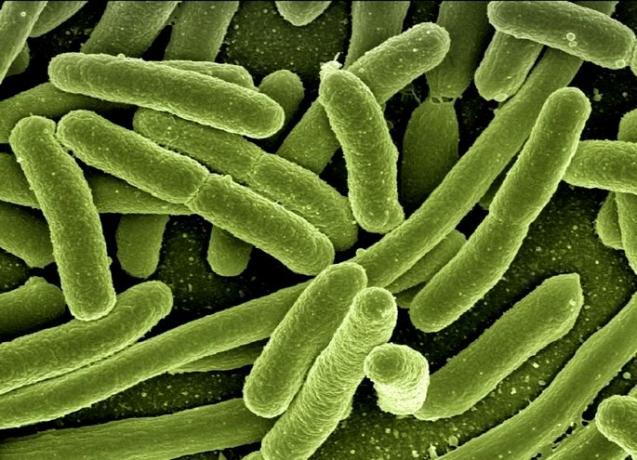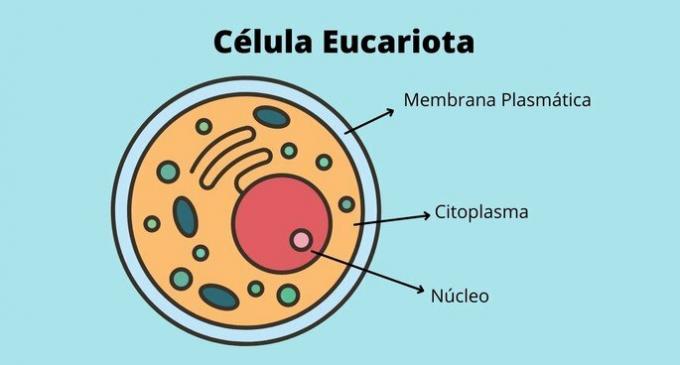Cell cycle is the life span of the cell, which like people, is also born, grows and reproduces. This cycle is very important, because all the time there are cells reproducing.
Examples of this are the healing of a cut in the skin, the growth of nails, or the renewal of cells that we cannot see - such as those in liver cells, whose cycle can take more than one year.
The eukaryotic cell cycle takes place in two stages: interphase and mitosis.
1st phase: interface
Interphase is the period of life in which cells carry out their functions and are prepared to divide, in order to ensure the proper functioning of the organism.
It is the longest period of the cell cycle, which occurs in an organized manner, and is divided into 3 sub-phases: G1, S and G2.
G1
G1 is the phase in which cell growth or development occurs, and it starts soon after cell formation.
During this period, protein synthesis occurs, which is the production of new proteins. In addition, the DNA is checked, ensuring that it does not show any damage that would prevent you from progressing to the next stage.
It should be noted that there are cells that do not divide and that, for this reason, do not pass to the later stage, the S. When this happens, the cell remains in a phase that is called G0. An example of cells that remain in G0 are red blood cells.
On the other hand, there are also cases where a cell in phase G0 returns to phase G1.
s
In the S phase, the synthesis or duplication of DNA takes place, hence the name S, in reference to the synthesis. It is the most important of the interphase, because it allows cell division to result in the same number of chromosomes.
In this phase, the centrioles, as well as the region where they are located (the centrosome), are duplicated.
G2
In step G2, which comes before the period of cell division, the cell continues in a process of protein production, in addition to which the duplication of organelles takes place.
In this phase, one more control is made to check if the cell can continue its cycle normally, that is, progress to its division.
Learn more about interface.
2nd stage: mitosis
Mitosis, also called mitotic phase (M), happens after interphase, a step in which cells were prepared for cell division to take place efficiently. This phase results in the reproduction of two genetically identical nuclei.
Mitosis occurs in most of our body's cells - in their growth, regeneration and renewal, and is organized into 5 phases: prophase, prometaphase, metaphase, anaphase and telophase.
prophase
Prophase initiates mitosis and is when the condensation or spiraling of chromosomes takes place. At the end of this phase, the caryotheque is broken.
Prometaphase
In prometaphase, the disruption of the caryotheca results in a mixture of the nucleus and cytoplasm.
metaphase
In metaphase, maximum condensation of chromosomes occurs, and the centromeres line up on the equatorial plate of the cell, while the pairs of chromatids separate.
Anaphase
Anaphase begins with the separation of the sister chromatids, which move to the opposite ends of the spindle and reach the poles with the same genetic material.
telophase
In telophase, the nucleus of both poles is reorganized - they no longer have the shape of a spiral - and the caryotheca is reconstituted, ending the caryokinesis, which is the division of the nucleus. After that, the cell returns to the interface.

Meiosis: Another Cell Division Process
Cell division can also happen through another process: meiosis.
The main difference between meiosis and mitosis concerns their reproductive functions, as mitosis can generate many identical new cells, meiosis generates only four daughter cells genetically modified.
For you to understand better, read Mitosis and Meiosis: Summary, Differences and Exercises.
Bibliographic references
MENDONÇA, Vivian L. Biology: ecology: origin of life and cell biology, embryology and histology. - Volume 1. 3. ed. São Paulo: Editora AJS, 2016.
SADAVA, D. et al. Life: the science of biology. - Volume 1. 8. ed. Porto Alegre: Artmed, 2009.


